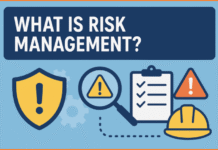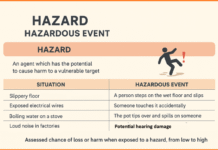Use of computers for safety and health information systems became critical from 9703 with the inception of Occupational Safety and health Act in USA as much documentation, reporting and analysis were required by that Act. In our country, still it is in process.
Manifold use of computers for safely, health and environment is as under:
- As its general use in science and engineering, computers are used for mathematical and statistical calculations, graphics, documentation, typing, printing, indexing, searching for literature, data reduction, recording and maintenance of data, control of automated production lines (CAD, Computer Aided Design, CAM, Computer Aided Manufacturing and DCS process control) etc.
- Automation of information paths and use of Safety Internet System
- Process control in plants and laboratories.
- Accident and medical records.
- Costing of accidents and losses.
- Causation analysis of accidents or hazardous events.
- Signal analysis and medical decision making, ECG analysis and diagnosis of heart problems, sonography, scanning, surgery etc. 8. Preventive Medicine and Epidemiology, screening, examinations of ill population and comparison of their data with the healthy, population for early diagnosis of diseases. .
- Maintaining a long-time qualitative quantitative record of chemical exposure workers.
- Maintaining environmental sampling measurement data. Using for gas disl models and mathematical models for reliability engineering.
- Preparing and maintaining pen statements of accidents, injuries, causation break-ups, compensation and other costing aid cases, near miss cases, safety training, of compliance; etc.
- Safety reports, manuals, procedures, points, mutual aid systems and emergency items can-be quickly stored, update reproduced.
- Maintaining information of won conditions, engineering controls, fire and gas leak. controls, administrative controls, n controls, personal protective equipment their selection, training programmes etc.
- Simulations to determine where ha reductions would be more effective an change in failure probability that would Useful to carry out hazard analyses, fault tree analysis etc.
- Maintaining employee demographics histories.
- Scheduling of inspections, surveys, me workplace monitoring, biological monitoring condition monitoring, corrosion monitoring maintenance programmers etc.
- Reporting at any time to internal management or external statutory authorities or p agencies.
- Keeping records of Material Safety Data Indian Standards, Statutory. Provision Forms, Reports for Pollution Control Boar
- Statistical analysis by using ready made or designed software.
- Using robots, auto-controls and safety devices avoid accidents to persons and property.
The special use of computers in addition general benefits of software (Expertise, Up to information and Improved management) is for Accident recording and analysis, information chemical hazards, Audit recording and analysis Data on such points are as under:
- Automatic printing of statutory and other safety forms.
- Automatic generation of periodical report.
- Analysis of near misses in the same details injury accidents.
- Multiple records of injury, property and v damage from the same incident.
- Linked incident costing so that reports automatically include details of the involved.
- Automatic summaries and their graphical displays.
- On-line computing using own computer to contact the library or publisher’s computer to obtain and read off the information required.
- CD-ROM (Compact Disc Read Only Memory) and player for the computer and special software on chemical hazards and control technology. The information from the disc 15 displayed on the computer screen conversely, information 1n the computer can be copied on CD by using CD writer.
- Use of floppy discs, CDs and Pen drive to read off the information.
- Database from CAMEO, COSHFL APELL etc. and onsite and offsite emergency plans.
- Safety audit and environmental audit details by using a set of audit questions (also known as audit protocol). Such audit software packages include:
a) The ability to edit the audit questions and add audit questions as new risks are identified.
b) The ability to add guidance for the auditors to specific questions, including details 0f any relevant standards.
c) Displaying two or more sets of audit results on the screen at a time and to compare them.
d) Graphical display of audit summaries.
e) Automatic generation of audit reports, including action plans.
F) Diary facilities to assist in managing an audit schedule and keeping track of recommendations for remedial action.





